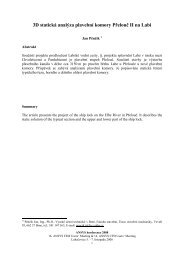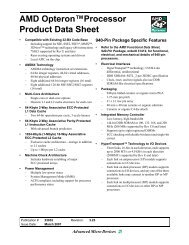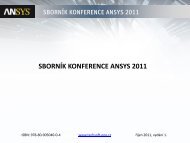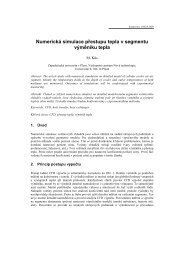A steady state approach to calculation of valve pressure rise rate ...
A steady state approach to calculation of valve pressure rise rate ...
A steady state approach to calculation of valve pressure rise rate ...
Create successful ePaper yourself
Turn your PDF publications into a flip-book with our unique Google optimized e-Paper software.
TechS<strong>of</strong>t Engineering & SVS FEM<br />
If we take in<strong>to</strong> account some simplifications:<br />
<br />
<br />
dynamic effects are avoided,<br />
<strong>valve</strong> at fixed poppet stroke behaves like an orifice which has quadratic function behavior for wide<br />
range <strong>of</strong> flow <strong>rate</strong>s,<br />
we can design the <strong>valve</strong> characteristic from several CFD <strong>steady</strong> <strong>state</strong> <strong>calculation</strong>s. This <strong>approach</strong> is shown for<br />
charge <strong>pressure</strong> relief <strong>valve</strong>.<br />
spring pretension<br />
mechanism<br />
nut with guide<br />
R guide<br />
pump end cap<br />
outlet channel<br />
connected <strong>to</strong> pump<br />
case<br />
case <strong>pressure</strong> marked<br />
by blue (p case )<br />
R seat<br />
springs<br />
balance chamber<br />
poppet<br />
gallery (channel)<br />
charge <strong>pressure</strong><br />
marked by red (p charge )<br />
inlet branch <strong>of</strong> the<br />
gallery for measurement<br />
as well as CFD purposes<br />
these branches are<br />
closed for measurement<br />
as well as CFD purposes<br />
Fig. 2. Design <strong>of</strong> charge <strong>pressure</strong> relief <strong>valve</strong>

















